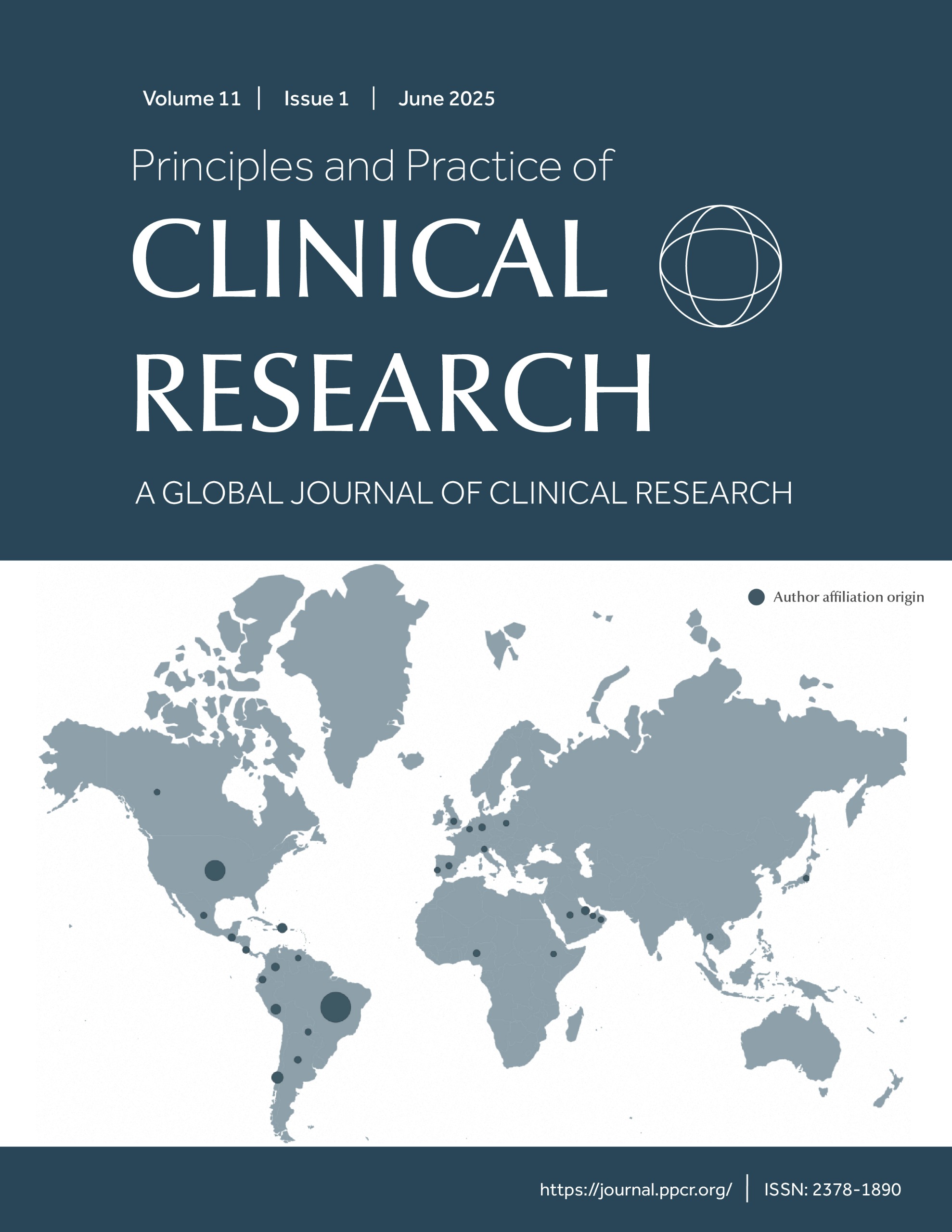Tatiana Soares
Niagara Health Knowledge Institute
Nantawan Koonalinthip
Department of Rehabilitation Medicine, Faculty of Medicine, Chulalongkorn University, Bangkok, Thailand
Rogerio Diniz Takahashi
Centro de Diagnósticos Brasil - Alliança Saúde, São Paulo, Brazil.
Jose Gabriel Lara-Amador
Department of Microbiology, Immunology and Tropical Medicine, George Washington University, Washington D.C. USA
Ramiro Sienra
Centro de Oncologia e Doenças Autoimunes, São José dos Campos, Brazil
Pilar Buendía Montenegro
Acute Pain Unit, Hospital del Trabajador, Santiago, Chile
Maria Daniela Sarquis
Universidad de Carabobo, Valencia, Venezuela
Elmustafa Abdalla
Hamad Medical Corporation
Enry Jacob Melgar-Garcia
Universidad de Ciencias Médicas (UCIMED), San José, Costa Rica
Ewerton Borges de Souza Lima
Escola Paulista de Medicina, Universidade Federal de São Paulo
Mariana Alcantara Roldi de Azeredo
1Internal Medicine Department, Hospital Frei Galvao - Santos, São Paulo
Yahaira Carpio Colmenares
Alberto Hurtado School of Medicine, Cayetano Heredia Peruvian University, Lima, Peru
Carlos Betancourt-Mendez
Research Collaborator Ophthalmology Department, Mayo Clinic - Jacksonville.
Christel Trifone
Department for general and abdominal surgery, Klinikum Chemnitz gGmbH, Chemnitz, Germany
Eva Borges
Unidade Local de Saúde Santa Maria, Lisbon, Portugal
Jessica Monteiro Vasconcellos
Instituto D'Or de Pesquisa e Ensino, Brasilia, Brazil
Julia Bertuzzo Tavares
Faculdade São Leopoldo Mandic, Campinas, São Paulo, Brazil
Vitória De Ávila
Faculdade São Leopoldo Mandic, Medicina, Brazil
Laura C. Ibanez-Pintor
Vincent Center for Reproductive Biology, Massachusetts General Hospital, Boston, MA, USA.
Mateus Cendon de Paula
Bahiana School of Medicine and Public Health, Bahia, Salvador, Brazil.
Natalia Rojas Amaris
Medicine Department, Division of Gastroenterology, Hepatology and Nutrition, Beth Israel Deaconess Medical Center. Boston, MA, USA
Roger Albornoz
Escuela de Medicina, Universidad Peruana Union, Lima, Perú
Tobias Lerchner
Department of Cardiology and Vascular Medicine, West German Heart and Vascular Center Essen, Medical Faculty, University Hospital Essen, Essen, Germany
Maria Ximena Escobar
Universidad Francisco Marroquin, Guatemala
Jose Genao Ega
Pontificia Universidad Católica Madre y Maestra, Dominican Republic
Safa Almarzoky Abuhussain
Umm Al-Qura University, Pharmacy College, Pharmacy Practice Department, Makkah Saudi Arabia
Inia Andrea Perez Villa
Harvard University, T. H. Chan School of Public Health, ECPE-PPCR Boston , MA, USA/ Unidad de Infectología, Departamento de Medicina Interna, Clínica Alemana de Santiago, Chile
Yusuf Adelabu
Harvard University, T. H. Chan School of Public Health, ECPE-PPCR Boston , MA, USA / Department of Medicine, Faculty of Clinical Sciences, College of Medicine, University of Lagos, Lagos, Nigeria
Arthur Gomez da Silva Netto
Harvard University, T. H. Chan School of Public Health, ECPE-PPCR Boston , MA, USA / Departamento de Oncologia, Hematologia e Transplante de Medula Óssea. Hospital de Clínicas da Umiversidade Federal do Paraná. Curitiba, Brazil
Maria Carolina Fontana Antunes de Oliveira
Harvard University, T. H. Chan School of Public Health, ECPE-PPCR Boston , MA, USA / University of São Paulo, Ribeirão Preto, Brazil
Khalid Mahmoud Fadlelmoula Ahmed
Harvard University, T. H. Chan School of Public Health, ECPE-PPCR Boston , MA, USA / Hamad Medical Corporation, Department of Acute Care Surgery, Doha, Qatar
Christianne Fernades Valente Takeda
Harvard University, T. H. Chan School of Public Health, ECPE-PPCR Boston , MA, USA / Hospital São José de Doenças Infecciosas, Brazil
Gabriel Vallejos Peñaloza
Harvard University, T. H. Chan School of Public Health, ECPE-PPCR Boston , MA, USA /2Departamento de Ginecología y Obstetricia, Facultad de Medicina, Clínica Alemana, Chile.
Tatiana Gomez Gomez
7Harvard University, T. H. Chan School of Public Health, ECPE-PPCR Boston , MA, USA/ Dr. Phillip Frost Department of dermatology & cutaneous surgery, University of Miami, Miami, FL, USA
Mohamed H. Mahmoud
Harvard University, T. H. Chan School of Public Health, ECPE-PPCR Boston , MA, USA / Primary Health Care Corporation - Qatar
Sundus Sardar
Harvard University, T. H. Chan School of Public Health, ECPE-PPCR Boston , MA, USA / 5Pennsylvania State University Milton S Hershey Medical Center, PA, USA
Thalita Bento Talizin
Hospital das Clínicas da Faculdade de Medicina da Universidade de São Paulo - HCFMUSP, Brazil
Guido Felizzia
Hemato-Oncology Department, Hospital de Pediatría J.P. Garrahan, Buenos Aires, Argentina
Abstract
Background: Exposure to environmental pollution, particularly air pollutants, and its relationship with childhood central nervous system (CNS) tumors is a growing public health concern. Understanding these associations is crucial for the implementation of protective measures for children and the development of strategic public policies.
Objective: This systematic review examines the association between air pollution exposure and the risk of CNS tumors in the pediatric population aged 0-19 years.
Methods: Following PRISMA guidelines, we used PubMed, SCOPUS, EMBASE, Google Scholar, and CENTRAL baselines up to May 2024. We included only observational studies focusing on children exposed to air pollutants, excluding tobacco-related exposures. Data on study design, population characteristics, exposure assessment, and types of CNS tumors were extracted and analyzed.
Results: We included 25 studies (case-control and cohort) conducted across North America, Europe, Australia, and Asia. The studies assessed pollutants such as benzene, nitrogen dioxide (NO2), particulate matter (PM2.5), and polycyclic aromatic hydrocarbons (PAHs). Some studies reported positive associations between specific pollutants and increased CNS tumor risk, while others found no significant links. Variability in exposure assessment methods contributed to inconsistent findings.
Conclusion: The evidence linking air pollution to childhood CNS tumors remains inconclusive. Further research, with standardized exposure assessments and consideration of critical exposure windows, is needed to clarify these associations and inform public health policies to reduce environmental risks to children.
Key words: Air pollutants, Environmental exposure, Central Nervous System Neoplasms, Pediatrics.

